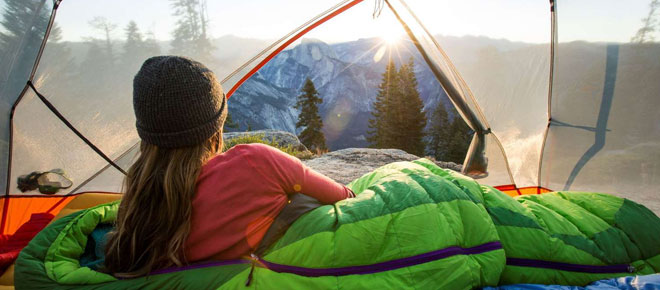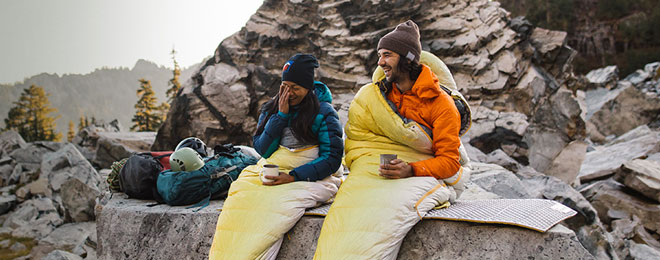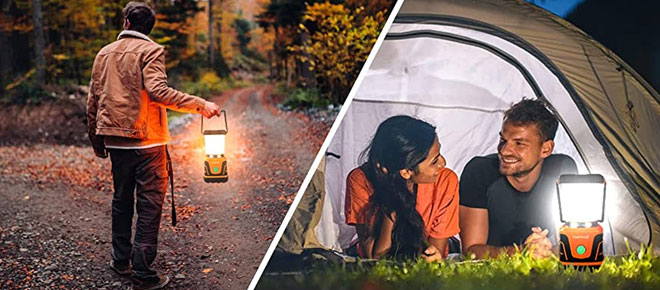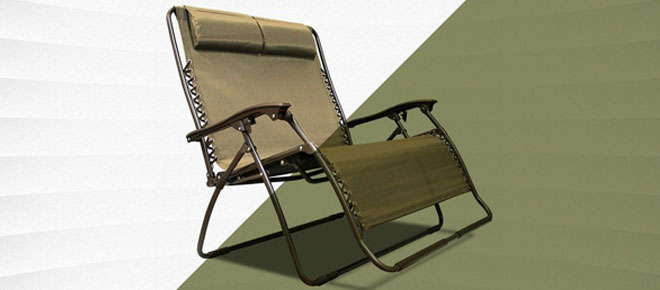Choosing the Right Sleeping Bag for Your Camping Trip

Selecting the right sleeping bag for your camping trip is crucial for a comfortable and restful outdoor experience. Here's a guide to help you choose the perfect sleeping bag:
Consider Temperature Ratings
While selecting a sleeping bag for a camping trip, consider the temperature ratings to ensure comfort and safety. Look for bags rated for temperatures slightly lower than the lowest temperature you anticipate encountering. This ensures that you stay warm and cozy during chilly nights. Pay attention to both the comfort rating, which indicates the lowest temperature at which the bag will keep the average sleeper comfortable, and the lower limit rating, which indicates the lowest temperature at which the bag will keep the average sleeper alive. Selecting the appropriate temperature rating ensures a restful night's sleep regardless of the outdoor conditions.
Choose the Right Insulation Type
When selecting a sleeping bag, it's crucial to choose the right insulation type based on your camping conditions and preferences. Down insulation offers excellent warmth-to-weight ratio and compressibility, ideal for cold and dry environments. However, down loses insulation when wet, making it less suitable for wet conditions. Synthetic insulation, on the other hand, retains warmth even when damp, making it a better choice for wet environments. Synthetic bags are also typically more affordable and hypoallergenic. Consider the expected weather conditions, durability, and budget when deciding between down and synthetic insulation to ensure optimal comfort and performance during your camping trip.
Evaluate Weight and Packability
When selecting a sleeping bag for a camping trip, take into its weight and packability, especially if you'll be backpacking or hiking to your campsite. Down-filled bags are typically lighter and more compressible than synthetic ones, making them ideal for weight-conscious adventurers. They pack down smaller, saving valuable space in your backpack. However, down insulation may lose effectiveness when wet. Synthetic bags, while slightly bulkier and heavier, retain warmth even when damp, making them more suitable for wet conditions. Evaluate your priorities regarding weight, packability, and insulation performance to select the most suitable sleeping bag for your outdoor adventures. and you can explore 4wd Supacentre Voucher Codes to make this protective gear more affordable.
Check the Sleeping Bag Shape
When selecting a sleeping bag for camping, consider its shape to ensure optimal comfort and insulation efficiency. Mummy-shaped bags are narrower at the feet and wider at the shoulders, reducing air space inside the bag and maximizing warmth retention. They are lightweight and thermally efficient, making them ideal for cold-weather camping or backpacking trips where weight is a concern. Rectangular-shaped bags offer more room for movement and are suitable for warmer conditions or car camping. Semi-rectangular bags strike a balance between the two, providing a compromise between comfort and warmth. Choose the sleeping bag shape that best suits your camping needs and preferences.
Consider Length and Width
When choosing a sleeping bag for camping, consider the length and width to ensure a comfortable fit. Tall individuals may require longer bags to accommodate their height, while wider bags provide more room for movement. Rectangular-shaped bags offer ample space but may be less thermally efficient than mummy-shaped bags. Consider your sleeping preferences and body size when selecting the appropriate dimensions. Ensure the sleeping bag allows enough room to stretch out comfortably without feeling cramped. By choosing the right length and width, you can enjoy a restful night's sleep during your outdoor adventures.
Check for Additional Features
When selecting a sleeping bag for camping, don't overlook additional features that enhance comfort and convenience. Look for features like draft tubes along the zipper to prevent heat loss, hood cinches to seal in warmth, and stash pockets for storing essentials like phones or headlamps. Consider features such as zipper guards to prevent snagging and water-resistant shell fabrics for added protection in damp conditions. Some bags also come with compression sacks for easy storage and transportation. Evaluate these additional features based on your camping needs and preferences to guarantee a relaxing and pleasurable night's sleep outside.
Test Comfort and Fit
Before purchasing a sleeping bag for camping, it's essential to test the comfort and fit to ensure a restful night's sleep. Climb inside the bag to assess how it feels and whether there's enough room to roll over and stretch comfortably. Pay attention to the length and width to ensure a snug yet roomy fit that accommodates your body size and sleeping preferences. Check for any pressure points or discomfort caused by seams or zippers. By testing the comfort and fit of the sleeping bag beforehand, you can choose one that provides optimal comfort and support for your outdoor adventures.
Consider Long-Term Durability
When choosing a sleeping bag for camping, consider its long-term durability to ensure it withstands regular use and lasts for multiple seasons. Look for bags made from durable materials with reinforced stitching and high-quality zippers. Water-resistant shell fabrics help protect the bag from moisture and extend its lifespan. Consider reputable brands known for their durability and reliability. Check customer reviews and product warranties for additional reassurance. Investing in a durable sleeping bag ensures it remains in good condition over time, providing reliable warmth and comfort for many outdoor adventures to come.
By considering these factors and choosing a sleeping bag that aligns with your camping needs, preferences, and budget, you can ensure a cozy and restful night's sleep under the stars.
How to Clean and Store Your Sleeping Bag
Proper care and maintenance of your sleeping bag are essential to ensure its longevity and performance. Here's a guide on how to clean and store your sleeping bag properly:
- Spot Cleaning: For minor stains or dirt, spot clean your sleeping bag using a gentle detergent, warm water, and a soft brush or cloth. Steer clear of bleach and other harsh chemicals as they can harm the fabric.
- Machine Washing: Use a front-loading machine to wash your sleeping bag if it can be done. washing machine with a gentle cycle and mild detergent specifically formulated for outdoor gear. Avoid using fabric softeners or bleach. Wash the sleeping bag separately to prevent damage from zippers or hooks.
- Drying: After washing, air dry your sleeping bag thoroughly. Hang it outdoors in a shaded area or lay it flat on a clean surface. Avoid direct sunlight and heat sources like dryers, as they can damage the fabric and insulation. Gently fluff and shake the sleeping bag periodically to redistribute the insulation.
- Storage: Store your sleeping bag loosely in a large breathable storage sack or cotton pillowcase to allow air circulation and prevent compression of the insulation. Avoid storing it in a stuff sack for extended periods, as this can affect its loft and warmth retention.
- Avoid Compressing: When not in use, store your sleeping bag in a cool, dry place away from direct sunlight and moisture. Avoid storing it in a compressed state, as this can degrade the insulation over time. Hang it or lay it flat to maintain its loft and insulation properties.
- Occasional Washing: Depending on usage, occasionally wash your sleeping bag to remove body oils, sweat, and dirt that can accumulate over time. Follow the manufacturer's instructions for washing frequency and care to maintain the integrity of the fabric and insulation.
- Professional Cleaning: If your sleeping bag requires deep cleaning or specialized care, consider taking it to a professional outdoor gear cleaner. They have the expertise and equipment to properly clean and restore your sleeping bag without causing damage.
By following these tips for cleaning and storing your sleeping bag properly, you can prolong its lifespan, maintain its performance, and ensure a comfortable night's sleep on your outdoor adventures.
Top Best Sleeping Bags for Camping Adventures
When it comes to camping adventures, having the right sleeping bag can make all the difference in ensuring a comfortable and restful night's sleep. Here are some of the top-rated sleeping bags for camping:
- Kings Escape Sleeping Bag: Eco Trail Synthetic 20 offers sustainable performance without sacrificing warmth and comfort. Made from recycled materials, this synthetic sleeping bagfeatures Heatseeker Eco insulation and a roomy, rectangular shape for maximum comfort. additionally, you can look into Sports and Outdoors Coupons to lower the cost of this protective equipment.
- Marmot Trestles Elite Eco 20: The Marmot Trestles Elite Eco 20 is a versatile sleeping bag suitable for various camping conditions. It features SpiraFil high-loft insulation, which provides warmth and compressibility. The anatomically shaped foot box and 3D hood ensure a comfortable fit, while the durable water-repellent finish keeps moisture out.
- REI Co-op Trailbreak 20: Offering great value for money, the REI Co-op Trailbreak 20 is a budget-friendly option for campers. It features synthetic insulation for reliable warmth and a roomy mummy shape for comfort. The full-length zipper allows for easy ventilation, while the included compression sack makes it easy to pack and transport.
- Big Agnes Torchlight UL 20: The Big Agnes Torchlight UL 20 is a lightweight and packable sleeping bag designed for backpacking and camping adventures. It features DownTek hydrophobic down insulation for warmth and water resistance. The unique expandable design allows you to customize the bag's width for personalized comfort.
- Nemo Disco 15: With its innovative spoon-shaped design, the Nemo Disco 15 offers roomy comfort for side sleepers. It features 650-fill power-down insulation and Thermo Gills for temperature regulation. The waterproof and breathable foot box ensures dry feet in wet conditions, making it an excellent choice for camping in variable weather.
These top-rated sleeping bags combine comfort, warmth, and durability to enhance your camping adventures and provide a cozy night's sleep under the stars.
Conclusion
Selecting the perfect sleeping bag for camping is crucial for a comfortable, restful night under the stars. Prioritize insulation, shape, and material according to the climate and your personal preference. The right choice ensures warmth, comfort, and durability, enhancing your outdoor adventure.








